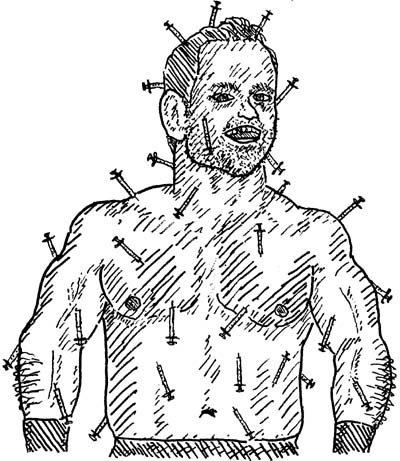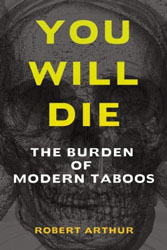Posted: December 16th, 2007 | Filed under: cocaine, DEA, drugs, marijuana, Uncategorized | 14 Comments »

Two More Bushes Get High
In compiling the lists of successful people who used illegal drugs for my book I avoided mentioning those in the modern entertainment industry. The first reason is that the arts are one of the only areas in which the admission of drug use will not cripple a career so the revelations are endless. (For sample see LINK.) Second, artists, e.g. rock stars, tend to sensationalize their drug usage to appear wild, crazy, and tormented. This tends to reinforce the stereotypes rather than break them. Third, an artist is not considered to have a “real job” by much of our populace. For those reasons I usually don’t bother noting modern artists.
In this blog entry I am going to make an exception. As comedian and talk-show host, Bill Maher, pointed out in his 2002 NORML conference address, prominent drug users need to come out of the closet. As with the early gay movement, recreational drug users cannot overcome negative stereotypes when their successful members hide. Maher proceeded to out Harrison Ford and Ted Turner in his speech. While any outing is noteworthy, the most impressive outing I know of is Ashton Kutcher’s 2003 outing of the twin daughters of President George W. Bush, Jenna and Barbara.
Kitty Kelley, the queen of unauthorized biographies, has investigated influential people – Frank Sinatra, Nancy Reagan, Jackie Onassis, and the Royal Family – and yet she wrote that people were the most fearful to talk about the Bush clan. Add the fact that First Children are still given relatively gentle treatment by the media and it is unlikely someone was going to out young Jenna and Barbara. Enter Kutcher.
Kutcher not only outed the Bushettes, but he did it with flair. In the 2003 Rolling Stone cover story the former underwear model openly revealed his past enjoyment of marijuana. He also described attending a Los Angeles Nike party in the early 2000s in which Jenna and Barbara were in attendance. Despite the fact his friend lewdly commented, “I’d fucking nail the shit out of that bitch!,” in earshot of Secret Service agents, the Bush girls still inquired what Kutcher was doing after the party.
Everyone ended up at Kutcher’s afterwards. Kutcher revealed that the Bushes engaged in underage-drinking in his abode with the Secret Service right outside. At one point he went upstairs to his aforementioned friend’s room and in his words:
… I can smell the green wafting out under his door. I open the door, and there he is smoking out the Bush twins on his hookah.
As usual, when a celebrity says something “too” honest their public relations staff has to then attempt obfuscation. In this case, Kutcher’s spokeswoman said he was not contrite about the outing because “he didn’t say what was being smoked or who was doing the smoking.”Her statement is comical to anyone familiar with marijuana parlance. (For you east coasters, “smoking out” is the equivalent of “smoking up.”)
George W. Bush smoked marijuana and now his daughters have as well. There is nothing wrong with this, of course, except for Bush’s hypocrisy. Bush has a horrible record regarding marijuana tolerance. Despite promising in 2000 to respect states’ independence in determining marijuana policy, he has done the exact opposite, in fact the federal government under Bush has done everything in its power to prevent other countries from giving marijuana users greater liberty. LINK
Sources:
- Gavin Edwards, “Ashton Kutcher,” Rolling Stone, 29 May 2003.
- Kitty Kelley, The Family (2005).
- Bill Maher, NORML 2002 Conference Address, 20 Apr. 2002. LINK (DOC file)
- Karen Thomas, “Did the Bush twins inhale? Kutcher won’t say,” USAToday.com, 7 May 2003, ret. 15 Dec. 2007. LINK
Posted: September 5th, 2007 | Filed under: DEA, drugs, media bias, steroids, Uncategorized | Comments Off on Scapegoating Drugs: Steroids
Chris Benoit
Not much has changed in 75 years when it comes to blaming drugs for heinous murders. In the 1930s it was Henry Anslinger trying to drum up funding for the precursor to the Drug Enforcement Administration (DEA). He would tell the media and congress that marijuana was responsible for gruesome homicides by twisting isolated incidents. The media and congress didn’t care that doctors called these claims bogus because sensationalizing and fear mongering brought them readers and votes.
In 2007, only conservative squares that don’t read can still believe the DEA’s continuing demonization of marijuana. However, just as most of mainstream America was not familiar with marijuana when Anslinger made those fantastic allegations, in 2007 most of mainstream America is not familiar with steroids and so the game is played.
On June 26, 2007, the professional wrestler Chris Benoit, “The Canadian Crippler,” was found dead in his Georgia home along with the corpses of his wife and seven-year-old son. Benoit had killed them both and then strangled himself. As every narco-phobe knows professional wrestlers have big muscles and big muscles means steroids and steroids means “roid rage.” When anabolic steroids were found in the house the stories could write themselves.
A leader of the charge was the commentator, Bill O’Reilly. The popular O’Reilly has built a reputation on using “common sense” instead of research and facts to provide a “no spin zone” for his viewers. (For examples of his common sense trumping facts go to the Bill O’Reilly Page at Media Matters.) On June 27 O’Reilly had a former professional wrestler, Jon Stewart, on The O’Reilly Factor to discuss Benoit.
O’Reilly asked Stewart about Benoit and it immediately became apparent the angle O’Reilly wanted:
Stewart: …. Chris was a very pensive, quiet guy, a work horse in the industry. And this is completely out of what I’ve known of him and his character.
O’Reilly: OK, but you did know that he was on steroids. And you know, once you get into that world of narcotics, illegal drugs, whatever you want to call them, your personality changes. Correct?
Stewart tries to provide more context to the story but O’Reilly keeps him on point:
Stewart: …. the mix of steroids, this gladiator mentality that we have, the way the public treats us that, you know, they’re not — we’re not held to any rules of society. Bill, is that a really lethal combination [sic].
O’Reilly: OK, but they call it roid rage.
At least with O’Reilly, his bias is apparent with his leading questions and interjections. However, the rest of the news media behaved in a similar fashion even in “objective” news accounts. Of course, this was assisted by the DEA.
The Benoit tragedy was a great opportunity for the DEA to publicly justify its micromanagement and prosecution of doctors. Days after the Benoit murders made headlines the DEA raided Benoit’s doctor’s offices twice and filed court papers charging Benoit’s doctor with illegally prescribing pain killers (not steroids) to two other patients in 2004-2005. (For an article explaining how easy it is for the DEA to prosecute doctors for prescribing painkillers read the 2004 article “Dr. Feelscared” in Reason.) The DEA also said that in a year long probe called “RX Weight Loss” Benoit was identified as someone who bought large amounts of steroids. The DEA refused to identify the source or even any information about the probe.
Predictably, the mother of all news sources, the AP obediently published all this information including the sinister fact that during one of the DEA’s raids on the doctor he was carrying Benoit’s file. These appeared in articles such as the following “Benoit’s doctor surrenders to authorities” on July 2, “Pro wrestler Benoit bought excessive amounts of steroids” on July 3, and “Drugs found in Benoit’s system after killings” on July 18.
All of this would be acceptable if it was not a sham.
- Roid rage is likely a myth as has been demonstrated by scientific studies. (See Sources below.) The age-old booby traps of reason are to blame. These include confusing causation with correlation, for example, those likely to abuse steroids are not model behavioral groups completely clean. Football and professional wrestling are violent sports and, on average, they attract more violent people. Another booby trap is anecdotal evidence, for example, just because someone on steroids falls down the steps does not mean steroids caused it.
- Roid rage is allegedly an explosion of fury. Benoit’s murders occurred over several days and included several deliberate acts, e.g. placing Bibles next to the victims.
- Medical tests on Benoit showed that steroids were in his system but as Georgia’s top medical examiner stated, “An elevation of that ratio does not translate into something abnormal in a person’s thought process or behaviour.” (Toronto Star, 18 July 2007) Ironically this information was buried in articles with titles such as, “Wrestler On Steroids When He Killed His Family.” (Australian, 19 July 2007)
Perhaps most alarming is that the AP writer, Harry Weber, revealed his complicity in the July 3 article with the following line, “Some experts believe steroids can cause paranoia, depression and violent outbursts known as ‘roid rage.'” This is the equivalent of ads saying that “some experts” recommend Crest toothpaste. Weber did enough research to know that “some experts” was all he could claim because “actual studies” debunked roid rage – actual studies he chose not to mention.
None of this mattered as the press got its sensational headlines and the DEA got its publicity. Not to be left behind, Congress is currently planning on holding hearings on professional wrestling and performance-enhancing drugs. As the chairman of the committee, Rep. Bobby Rush (D), said, “We must make sure that today’s wrestling sports heroes are not using illegal performance-enhancing drugs that, unfortunately, can and have led to their untimely deaths.” (Daily News, 30 Aug. 2007)
Sources
- F. Klotz, et al., “Criminality Among Individuals Testing Positive for the Presence of Anabolic Androgenic Steroids,” Arch. Gen. Psychiatry, Nov. 2007.
- F. Klotz, et al., “Violent Crime and Substance Abuse,” Forensic Sci. Int., 1 Mar. 2007.




